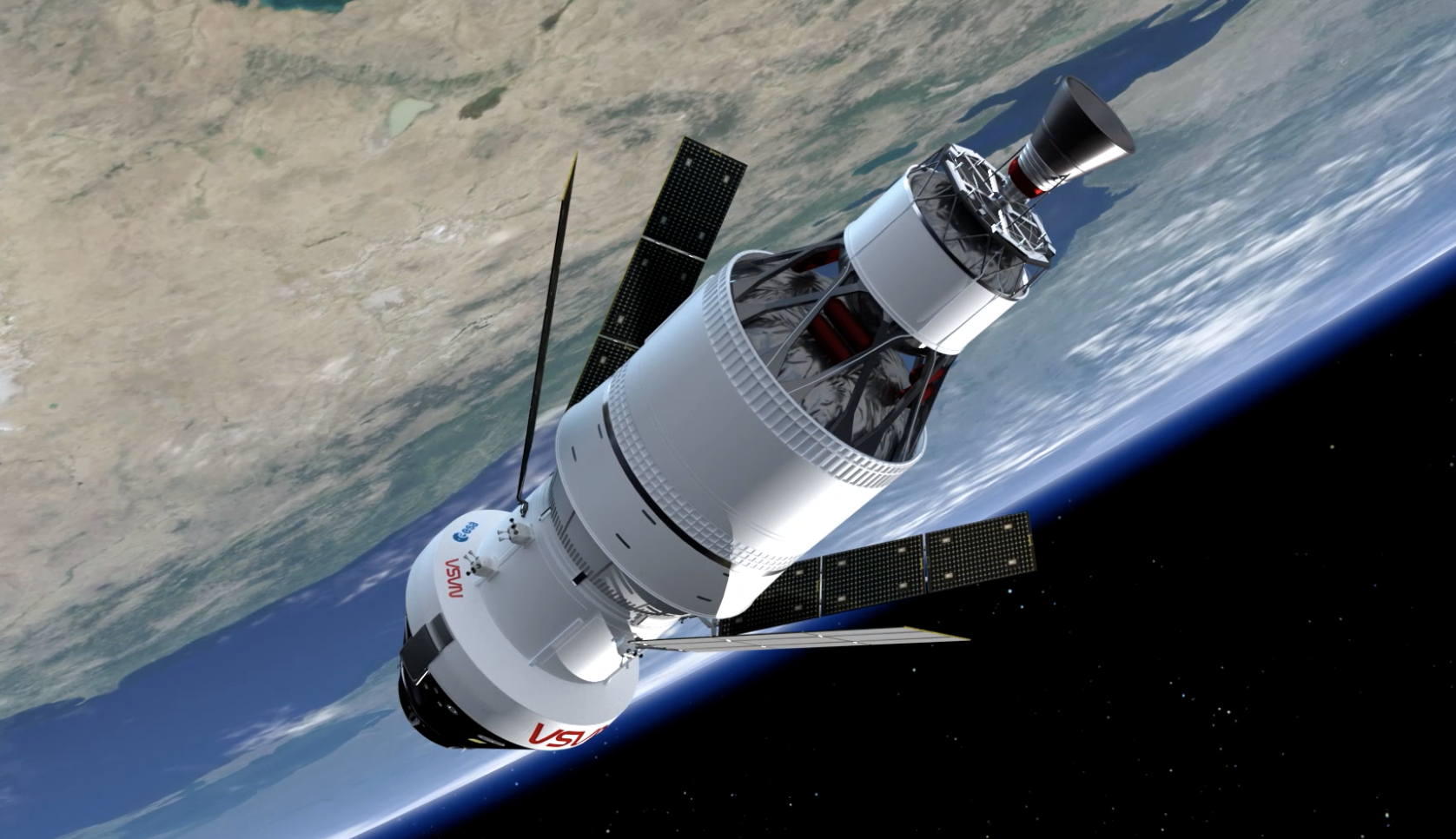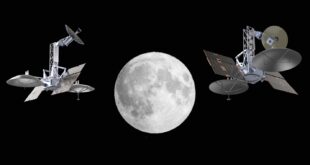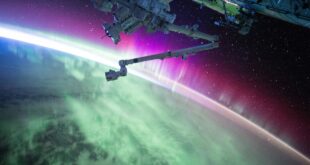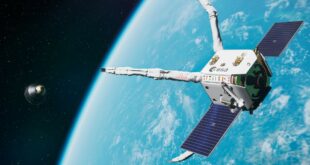by Christophe Bosquillon

ESA held its Annual Directors General Press Conference at its PARIS HQ on 11 January 2024. A recording is available here and a slide deck here. Among the many topics covered, one generated several burning questions: NASA having just a few days earlier announced Artemis II and III delays, would that impact ESA, and if yes, how?
Circumstances behind Artemis new delays
The new target for Artemis II, the first crewed Artemis mission around the Moon, is September 2025. Artemis III, which is planned to land the first astronauts near the lunar South Pole, is now scheduled for September 2026. Artemis IV, the first mission to the Gateway lunar space station, is deemed as remaining on track for 2028. As for launching the first integrated elements of the Gateway, NASA is further reviewing the schedule, to align it with the 2028 Artemis IV mission in more optimal ways, allowing for additional development time. When asked about the consequences of such delays, the ESA leadership answered that would not affect their hardware delivery program. ESA has already delivered the service module for Artemis II and is on track to ship the Artemis III hardware mid-year. While this is true and accurate, there is more to the story in terms of economic implications of European lunar activities via Artemis.
Implications for the European contribution to Artemis
ESA chipped in for Artemis through the European Service Module (ESM), that costs Europe €1.49 billion. The ESM is a key element of the Orion spacecraft, including propulsion, power, thermal control, and consumables. Without it, Orion wouldn’t fly to the Moon and NASA’s Artemis wouldn’t fly politically. That deal stems from a 2012 ESA agreement replacing the Automated Transfer Vehicle (ATV), that was used to refund NASA for Europe’s share of the cost of operating the ISS. But that’s not all: on top of the ESM, Europe, via a consortium led by Airbus and including Thales Alenia Aerospace, contributes to the Gateway space station, with contracts totaling €623.5 million for the International Habitat (I-HAB Module) and the European System Providing Refueling Infrastructure and Telecommunication (ESPRIT module). There is a quid pro quo: ESA reportedly obtained to place two European astronauts on the Artemis missions 4 and 5, when the I-HAB and ESPRIT modules will be delivered to the Gateway. There is a still unconfirmed option for a third European astronaut to be potentially involved in lunar surface activities.
International partners for Artemis critical hardware aren’t just ESA. JAXA of Japan contributes environment and life-support systems to the I-HAB. And under a new implementing arrangement expanding their human spaceflight collaboration with NASA through Gateway, the Mohammed bin Rashid Space Centre (MBRSC) of the United Arab Emirates (UAE) will provide Gateway’s Crew and Science Airlock module, as well as a UAE astronaut to fly to the lunar space station on a future Artemis mission. Therefore any further delays with the Artemis affect all the foreign partners as well.
Third: the latest NASA report on Space-Based Solar Power (SBSP)
On the same day, NASA published its latest assessment of Space-Based Solar Power (SBSP). The detail report is available here. The deal with SBSP is simple: more energy security, less greenhouse gases emissions, and mitigate the impending catastrophe of not meeting Net Zero on target and on time. Launching the architecture to deploy orbital SBSP would scale up a nascent space economy: launch market, opportunities linked to autonomous assembly and the entire stack enabling SBSP. To manufacture propellants and critical materials out of elements extracted from the Moon (known as ISRU – In-Situ Resources Utilization) would decrease costs, sustaining an integrated and secured energy market Earth-orbit-Moon, beneficial to energy hungry people everywhere.
While the conclusion and methodology of the NASA report sound solid, it is also repleted with assumptions which overload the contemplated SBSP architecture with unnecessary costly features. The impression is that the average politician would be easily made to conclude that SBSP is too complicated, too expensive, and cannot be done. There is also the argument that atmospheric emissions of greenhouse and toxic gases would nullify the ecological benefits of SBSP. The push and pull between the rapid launchers market expansion and climate change mitigation efforts is certainly a complex and contentious relationship, that requires a level-headed approach.
The first generation of SBSP infrastructure (2040?) will be built exclusively with elements from Earth. But eventually this is bound to change: the cost of transportation in space remains the essential parameter, together with the cost of manufacturing things in orbit and in cislunar and lunar space. It can be reduced. The point of Moon-manufacturing is to move propellant and components more easily to wherever these are needed between cislunar space and orbit, to later move people and cargo in between orbit and the Moon. A one-way ticket for a Starship to the Moon including the filling up of propellant depots would involve less than 10 flights, but more like over 20 flights if it’s a 2-way voyage. Finally, the dependency on chemical propulsion is bound to evolve by introducing electric propulsion (EP) for some legs of the orbital transfers and Moon voyages, further reducing costs.
Recent ESA Solaris studies have clearly established the techno-economic connection between Artemis-driven Moon ISRU and a viable SBSP-driven space economy leveraging the Earth energy markets and the urgency to decarbonize. While current consequences of Artemis accumulated delays appear manageable for NASA’s foreign partners, starting with ESA, that doesn’t mean they should be encouraged, leading to open-ended postponement of Artemis. Furthermore, NASA to give up on SBSP because it requires too many rockets sends the message that the nation is not taking SBPS seriously (on the contrary of Japan, China, India, the UAE, the UK, and Europe) Both issues are linked, we need Artemis, and we need American leadership in SBSP. A good start is here, a conversation involving Laura Winter, Ed Tate, Peter Garretson, and John Mankins.

Christophe Bosquillon has a diverse professional background, having operated globally with a focus on the Indo-Pacific region. His experiences in Japan, the Koreas, Taiwan, China, ASEAN, India, Russia, and Australia have given him a deep understanding of the multipolar realpolitik of our world under the Pax Americana. With a background in engineering, trade, and foreign direct investment in industries relevant to Space Resource Utilization (SRU), such as mining, transportation, energy, manufacturing, agrifood, environment, and digitalization, Chris is committed to developing SRU value chains that benefit the Earth. As an executive, owner, writer, and founder of Autonomous Space Futures Ltd, Chris has extensive experience in collaborative policy crafting and works to develop space business and governance models relevant to society. He is a member of NGOs that provide input to the United Nations Committee on the Peaceful Uses of Outer Space (UNCOPUOS) legal subcommittee Working Group on Space Resources. Chris contributes to regulatory clarity on appropriation, priority, sustainability, and sharing in a way that balances national interests with civil society inclusion, provided a transparent due process is followed. When advocating for access to technology and space for the Global South, Chris believes that emerging space powers’ participation in space markets must be commensurate with their interest and involvement in international space politics. He believes that their ability to develop sovereign domestic capabilities with spillover potential is also essential. Chris is keen on ‘Peace Through Strength’ diplomacy and deterrence-based security as enablers of secure space access. He supports sovereign cislunar space situational awareness as mandatory for freedom of circulation in the space domain and deconflicted cooperation on the Moon
 SpaceWatch.Global An independent perspective on space
SpaceWatch.Global An independent perspective on space




